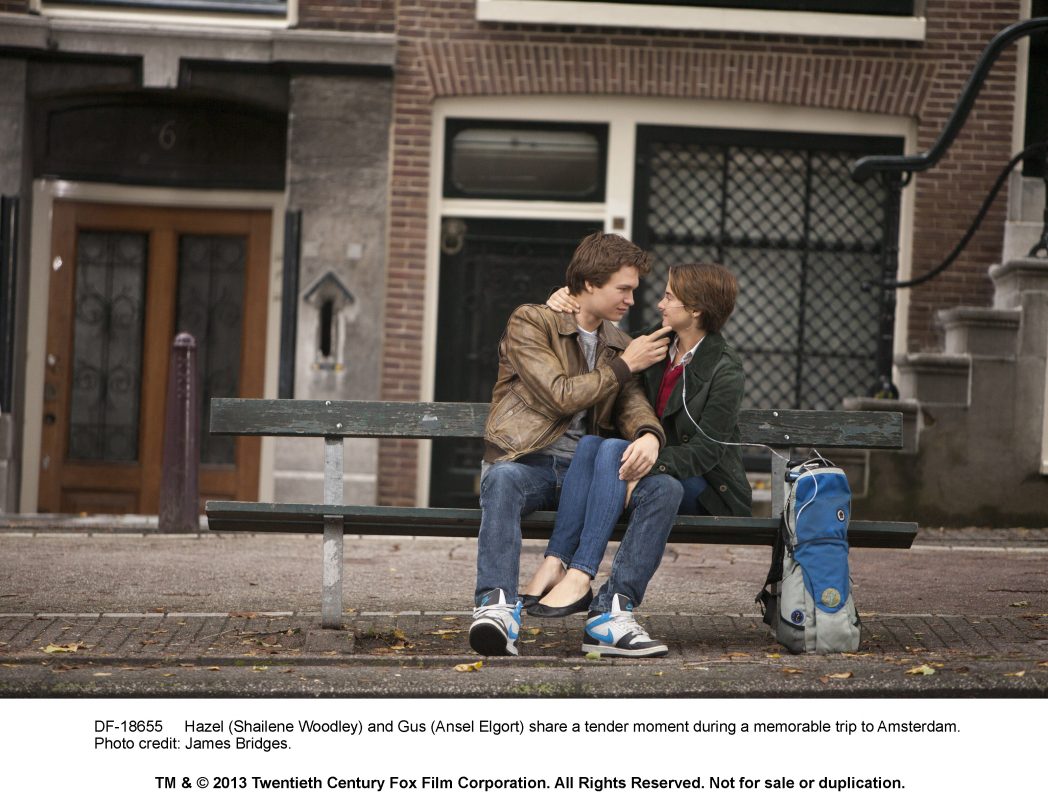
Over 40 years ago, America fell in love with the movie Love Story, based on the novel by Erich Segal. It was a corny story about a wealthy young man who defied his family by marrying a working class girl, who, in the end, died of cancer. It starred Ryan O’Neal and Ali MacGraw at peak beauty, launched the catchphrase “love means never having to say you’re sorry,” and made millions of moviegoers ugly-cry. Oh, and one more thing: It sucked.
If every generation gets the cancer love story it deserves, then this generation must be doing something right—because The Fault in Our Stars is so, so much better.
It starts, of course, with the wonderful source material, the wildly popular novel by John Green. The genius of his novel is that it managed to be both ironic and sentimental. It gave us all the guilty pleasures of a tearjerker love story, but with a healthy dose of snark to wash it down more easily. In particular, it mocked the industry of cancer kids—this notion that children with cancer were somehow saints. Hazel, the heroine with terminal cancer, wanted no part of that sentimentality. She was a normal teen—pissed about her cancer, passionate about life, funny, angry, geeky, scared. Also, Hazel wasn’t just worried about her own death—she worried even more about those she left behind: her doting parents and her beloved boyfriend Augustus, a cancer survivor himself, who is missing half of one leg.
The movie, which cleaves closely to the novel, stars the great Shailene Woodley, who has one of the most unaffected screen presences I’ve ever seen—you literally never see her act. Ansel Elgort plays Augustus, the boy she meets and falls in love with as they both share knowing eyerolls at a cancer support group. Augustus, both here and in the novel, is a bit of fantasy projection: an über charming dreamboat who is madly in love with Hazel from practically first sight. But Elgort plays him with conviction. It’s a performance that will launch a million Tumblr fan pages.
Equally great is Laura Dern as Hazel’s mother, trying so hard not to smother, or to show her own fear—and in some ways, I was more moved by the love story between Hazel and her parents (True Blood’s Sam Trammell plays her sweetheart of a dad) than the one between Hazel and Augustus. One of the most touching scenes occurs when Hazel is getting a bit of bad news about her cancer; director Josh Boone pans to her parents’ anxiously clutched hands, which Hazel notices, warily.
Willem Dafoe has a small but pivotal part as the reclusive and bitter author both Hazel and Augustus idolize and Nat Wolff, such a convincing wild child in Palo Alto, is totally loveable as Gus’s best friend, whose girlfriend dumped him the minute his cancer got too real.
Yes, The Fault in Our Stars can be cheesy—it even contains that old trope, a first kiss as onlookers applaud (at the Anne Frank House, no less!—although Augustus’s proud little bow afterwards makes it more winning)—but it can be very sharp, too. It makes interesting observations about death and grief and love, and it has a generosity of spirit that positively radiates throughout the whole film.
One final thought: Teen romances aren’t the kinds of movies that generate Oscar buzz, so I don’t think Shailene Woodley will be getting any love for her role as Hazel, but she deserves it. This is as intelligent and deeply felt a performance as you’ll see all year. Then again, I’m not too worried about Woodley. Her day will come.
